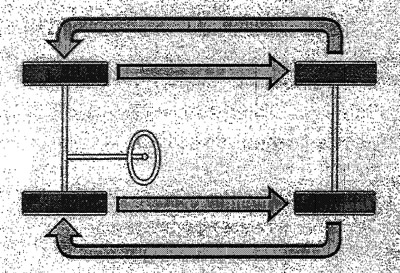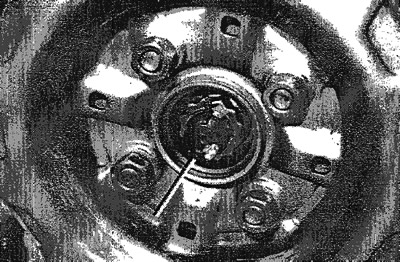
If the front tires are very worn, it is recommended to swap the front and rear wheels. By this replacement, approximately the same service life of all four tires is achieved.
Precautions: do not change tires one at a time, at least two should be replaced (on one axis). Tires with increased tread depth should be installed forward. On the front and rear axles, install only tires of the same design and size, if possible from the same manufacturer and with the same tread pattern.

Before removing the wheel, mark its position relative to the hub so that you can then install it in its original position.
Loosen the wheel nuts when the vehicle is on the ground. At the same time, apply the parking brake or engage first gear so that the car does not roll.
Attention: Light alloy wheels are covered with a transparent protective varnish against corrosion. When replacing wheels, make sure not to damage the protective layer, and if this happens, restore the varnish layer.
To protect against rusting of the disc, lubricate the center hole before installing it (nest) disc in contact with the hub front and rear with grease.
Clean contaminated wheel nuts and threads. Do not grease wheel nut threads.
Do not use wheel nuts for light alloy rims on steel rims and vice versa.
Tighten the wheel nuts crosswise in several passes. To tighten the wheel nuts, it is recommended to use a torque wrench so that the nuts are tightened! evenly. The tightening torque for all wheel nuts is 90 Nm.
Attention: If the wheel nuts are tightened unevenly or on one side, the wheel and/or rim can be deformed.
Wheel balancing
Initially installed wheels are balanced at the factory. Balancing is necessary to compensate for uneven weight distribution and material inhomogeneities.
In motion, imbalance manifests itself as angular oscillation and vibration. At high speeds, the steering wheel starts to shake.
As a rule, this shaking occurs only in a certain range of speeds and disappears again when the speed decreases or increases.
This imbalance over time can lead to damage to the suspension joints, steering and shock absorbers.
Wheels should be balanced after each tire repair, as due to wear and tear, the weight distribution changes.
